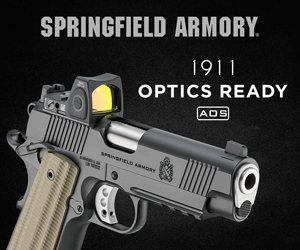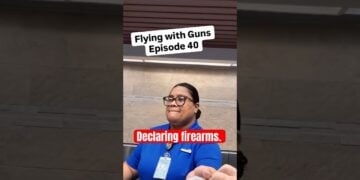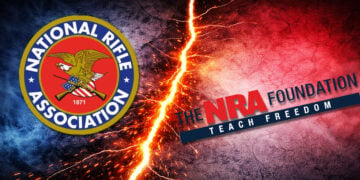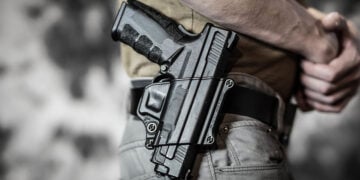Passing more Gun Control laws, seizing guns from the public, restricting gun access, buying back guns, making it more difficult to purchase firearms, and not enforcing gun laws already on the books have not worked to prevent gun violence in many locations. Several cities with meager legal gun ownership rates and stringent gun-control laws, such as Chicago and Baltimore, have incredibly high violence and gun-related murder correlation rates. Of six states where 50 percent of households own firearms (Alaska, Arkansas, Idaho, Montana, West Virginia, and Wyoming), four of these states rank in the top half of all states for having the lowest homicide rate. Two of these states rank in the top six, per Centers for Disease Control and Prevention data. But, remember from statistics that correlation does not equal causation.
More Gun Control Legislation Has Not Worked
There is no simple answer. It is difficult and complicated to compare apples with oranges, and many factors are involved. But, we must deal with the terrible violence and somehow reduce it. It appears that high gun-ownership density does not imply high rates of violent crime and that stringent gun controls do not reduce murder rates across the board, per separate research studies by Kates and Mauser, Kleck, John Lott, Liptak, Luo, and others. In November 2017, Retired Alabama Circuit Judge Rusty Johnston and Professor Gary Mauser reported results of their research study of criminologists who published peer-reviewed empirical research on firearms. They found that 62% of verifiable firsthand reports said that guns are used in self-defense to stop crime MORE OFTEN than in the commission of crimes.
Some cities are turning their attention away from more legislation as a way to curb violence, from making it harder to get a firearm, and from efforts to ban assault weapons and firearms. Some reports have accepted that show that assault weapons, for example, account for a minuscule percentage of most gun-related crimes. Later below, I give some examples of unique approaches by Richmond and Sacramento, California to reducing violence.
Is there a direct connection to the higher gun ownership rates and higher amounts of crime?
On November 5, 2017, in Sutherland Springs, Texas, there was a terrible murder of 26 innocent Texas First Baptist Church attendees, and 20 were injured. This crime was NOT a result of lax gun laws or a gun itself. Based on preliminary reports, it was a result of a deranged shooter with a history of many mental health problems over an extended period. He may have had a domestic issue with his mother-in-law and sent her threatening text messages to her. She was a parishioner at the First Baptist Church. President Trump added that the death toll for this tragic event could have been higher had it not been for two other armed individuals (i.e., legally-armed concealed carriers) who fired on the assailant.
But, keep in mind that “good guy or gal” concealed carriers themselves cannot usually prevent deadly, murderous events from occurring, only limit the death toll and injuries after they begin. Initial reports indicate in this mass murder, the bad guy was formerly denied a concealed carry handgun permit, received a Bad Conduct Discharge from the Armed Services as punishment issued by a court-martial. He was convicted of domestic violence assault charges against his spouse and child. He spent 12 months in military prison. The Bad Conduct Discharge with all veterans benefits forfeited did not, however, prohibit him from owning a gun, but a dishonorable discharge would have. So, he should not have been legally able to own a firearm or obtain a concealed carry permit based upon his conviction. He probably lied on his ATF Form 4473, Firearms Transaction Record, which happens. It asks about dishonorable discharges, being subject to court order restraints for harassing, stalking, threatening partner or child, and indictments for a felony.
The question remains: Was his conviction listed in the National Instant Criminal Background Check System (NICS) and flagged? And why could he even buy firearms? Nics determines if prospective firearms buyers’ name and birth year match those of a person not eligible to buy a gun.
Will more gun laws and gun forms to complete and universal, more in-depth background checks reduce violent crimes?
Studies by Professor Eugene Volokh, a law professor at UCLA, indicate that there is some evidence that denying guns to law-abiding people who might use them in self-defense tends to increase crime rates. He says there is also evidence that the possibility of “confronting a victim with a gun deters some criminals.” It seems that the above previously–mentioned strategies and gun control are the least effective means of reducing firearm-related violence, especially as we have recently seen in metropolitan areas like New York City, Las Vegas, Orlando, Chicago, San Francisco, Philadelphia, Baltimore, Boston, and New Orleans. And in non-metropolitan cities as well, like Sutherland Springs, Texas. I believe that attempting to restrict access to guns fails to address the causes of the majority of gun violence incidents, especially inner-city violence. After all, violence is caused by people and not from firearms, knives, baseball bats, screwdrivers, broken beer bottles, or other physical tools.
I agree with the many criminologists that conclude that cultural, economic, education, family, and demographic factors play a more significant role in violence and murder rates and that the number of guns, murders, and violent crimes may well be uncorrelated or correlated at a shallow level. (Again, correlation does not imply causation.)
Maybe we do need to focus on the individual, cultural, education, and social aspects and identifying and dealing with the clues of mental health issues?
Focusing on Individual Behaviors and Mental Health will Help
The question for all of us remains: What can we do to stem the violence and prevent it? To me, the focus must be on the individual, their mental health, their family unit and influences, and affecting their behaviors, values, education, problem-solving abilities, and actions, rather than the gun as a tool. A gun cannot fire itself. It would be ideal to deal with the behaviors and values of individuals before the violence happens which is a tremendous and challenging task and involves individuals and families and complex changes.
Some say violence is insolvable because of the many uncontrollable and unpredictable variables and individual behaviors. Some say that violence cannot be prevented and that there will always be “bad guys and bad gals.” While this may be true, I want to be action-oriented and try to solve this complicated and tough dilemma. Parents’ values, family and home influences, and the dedicated availability of parents are vital contributors to me.
What about the involvement and help of medical professionals? Should and to what extent should doctors and psychiatrists get involved? How do specially-trained mental health practitioners and psychologists contribute to emotional-state and behavior identification, diagnoses and treatments? Maybe efforts that concentrate on mental health evaluation and treatment, identifying individuals with specific violent and malevolent behaviors, drug abuse and abstainment, health care, housing, and job training programs might prove to reduce violence more than increasing gun control and passing more gun laws. If so, where do we start, after first enforcing the gun laws we have on the books now?
There are some unique approaches to curbing violence related to guns now, and they are very controversial.
Some cities are placing individual behaviors and group influences ahead of gun control to more directly assess and deal with the enormous amount of violence. One city north of Berkeley, CA and once considered as one of the most violent cities in America is Richmond. Richmond, California, has recently created a unique and controversial program that attempts to break the cycle of violence with mentorship, social services, and a $1,000-a-month stipend for each criminal in the program, according to CNN in 2016. The Operation Peacemaker program invites some of the most hardened criminals, mostly youth, suspected of violent crimes but whom authorities don’t have enough evidence to prosecute. These criminal “fellows” must pledge to put their guns away for a peaceful life. Some media call it “Cash for Criminals.” The program is controversial because in addition to helping criminals with education, career development, anger management, parenting, medical health, spirituality, etc., there’s also a financial focus and public funds are involved. Each criminal in the program who attends sessions and makes it past the first six months gets paid $1,000-a-month for the next nine months. Yes, that’s correct…. $1,000 each month for each criminal in the program. So, each program participant gets paid not to shoot someone or each other. Is there any chance of deception, collusion, secret agreements, illegal activities, or fraud among the participants or the administrators? Who pays for this? It seems this is negative reinforcement, rather than positive reinforcement.
Old B.F. Skinner may be turning over in his grave? He believed that the best way to understand and affect behavior is to look at the causes of a specific action and its consequences, not extraneous external factors, and what makes negative behaviors more or less likely to occur. Negative reinforcement occurs when stopping, removing, or avoiding a negative outcome strengthens a response or behavior. When good behavior is exhibited a bad outcome or consequence is removed, e.g., the bad result of not getting anymore is reversed, if you show up at some, but not all program sessions.
Can you pay for a meaningful and lasting change in major values and behaviors?
DeVone Boggan, Richmond’s Director of the Office of Neighborhood Safety, started focusing on the core group of criminals, all of whom were African American and aged 16-28 years old. He invited 25 individuals (three had died while Boggan was preparing his plan) and 21 showed up to be “fellows.” They attended sessions and meetings and the stipend carrot of $1,000 a month was dangled in front of them as a motivator if they would complete the program.
I understand that Richmond’s 18-24 month fellowship offered to criminals and potential high-risk criminals consist of seven parts. First, the individuals are visited several times a day by outreach social workers. Second, the fellows set out a multi-factor “life map” including career and health goals. Third, they are connected with social services and helped through application processes for benefits. Fourth, the stipend is given to them. Fifth, they can take educational trips around California and other locations (New York, South Africa, and Dubai have been destinations.) Sixth, a “college of elders,” retired or semi-retired role models in the community are connected with them. And seventh, they are provided internships based on their interests and talents.
Hmm? I wonder if money is a motivator for long-term behavior change and a significant turnaround? Is nine months in the program a sufficient time for lasting behavioral change? Or would some just endure for the short-term to get the reward and so are not motivated for long-term change? So, would they eventually return to their violent behavior over time? Many complex factors here to investigate further before conclusions.
Behavioral scientists say that money is not a long-term motivator and not responsible for a lasting behavioral change.
Money is nice, people expect it, but it is not a lasting motivator, according to behavioral research. Folks always want more money, no matter how much they receive. What matters to most people and what will lead them to regularly complete a task, change behavior, or work with a smile is beyond monetary rewards, several researchers believe. They say it is about the individual intrinsic factors for each action.
In one of my books Management: Processes and Paradigms for the Twenty-First Century, I present six motivation models, several influencing factors, and practical conclusions about motivation. One particular model by imminent psychologist and management researcher Frederick Herzberg presents internal motivators and external hygiene factors and their separate contributions to motivation. Briefly, his idea was that hygiene factors, for example, money, will NOT motivate because it is expected, but if it is not there, it can lower motivation. Motivators and maintenance factors are on two different scales, so the opposite of one does not mean the other exists and they are independent of each other. Dr. Herzberg’s in-depth research concludes that specific factors are hygiene and external in nature, e.g., money, and folks expect to have these provided at an adequate level. So he believes that money is NOT a motivator, especially over the long term. Since people expect to have money at a sufficient level, it is not responsible for long-term behavioral change and motivation, per Herzberg. Of course, I understand that individuals are very different and motivated differently… by various complex factors and in different situations.
None of Dr. Herzberg’s motivational factors included consideration of an external tool or gun as a contributor to individual behavior and motivation.
Something to think about is Herzberg’s research. He explains that his motivational factors for individuals include such things as responsibility, personal growth, the opportunity for achievement, and advancement. Again, Herzberg says that money is not a motivator, but a maintenance or expected hygiene factor. Can you see a parallel here with gun violence motivators? Does it apply to Richmond’s program and paying criminals not to shoot someone and get involved in violence?
Public Funds Spent for Subsidizing Criminality
If you want more of something, you subsidize it. So you financially spend, support, aid, promote, and invest in something. Last month, the Sacramento City Council in California unanimously approved $1.5 million to be paid from public funds on telling criminals not to break the law and to curb violence. Sacremento started their program called “Advance Peace” because of a spike in city violence. So, $1.5 million in cash stipends, similar to the above Richmond, California program, will go to gang members and criminals and a message will be sent. The Advance Peace program seems to legitimize gangs as political partners to be negotiated with about public policy. It will be interesting to see details about how this will work and the general public reaction and criminal response. Stay tuned!
Your suggestions for reducing gun violence and related mental-health issues?
What are your ideas about paying criminals money NOT to be involved in violent crimes? What can we do to prevent all the recent and future gun-related violence and related mental-health issues that are involved?
Photo by Author.
* This personal opinion article is meant for general information & educational purposes only, and the author strongly recommends that you seek counsel from an attorney for legal advice and your own personal certified weapons trainer for proper guidance about shooting & using YOUR firearms, self-defense and concealed carry. It should not be relied upon as accurate for all shooters & the author assumes no responsibility for anyone’s use of the information and shall not be liable for any improper or incorrect use of the information or any damages or injuries incurred whatsoever.










